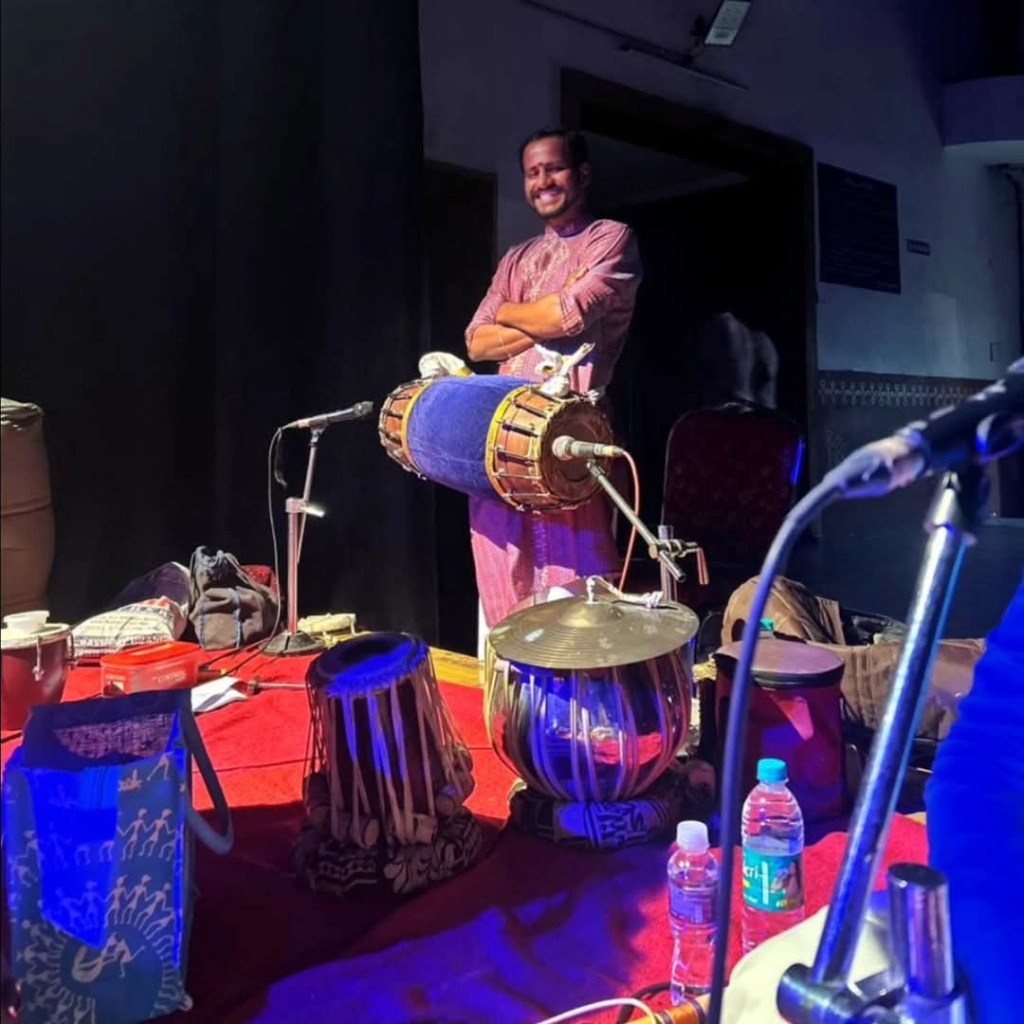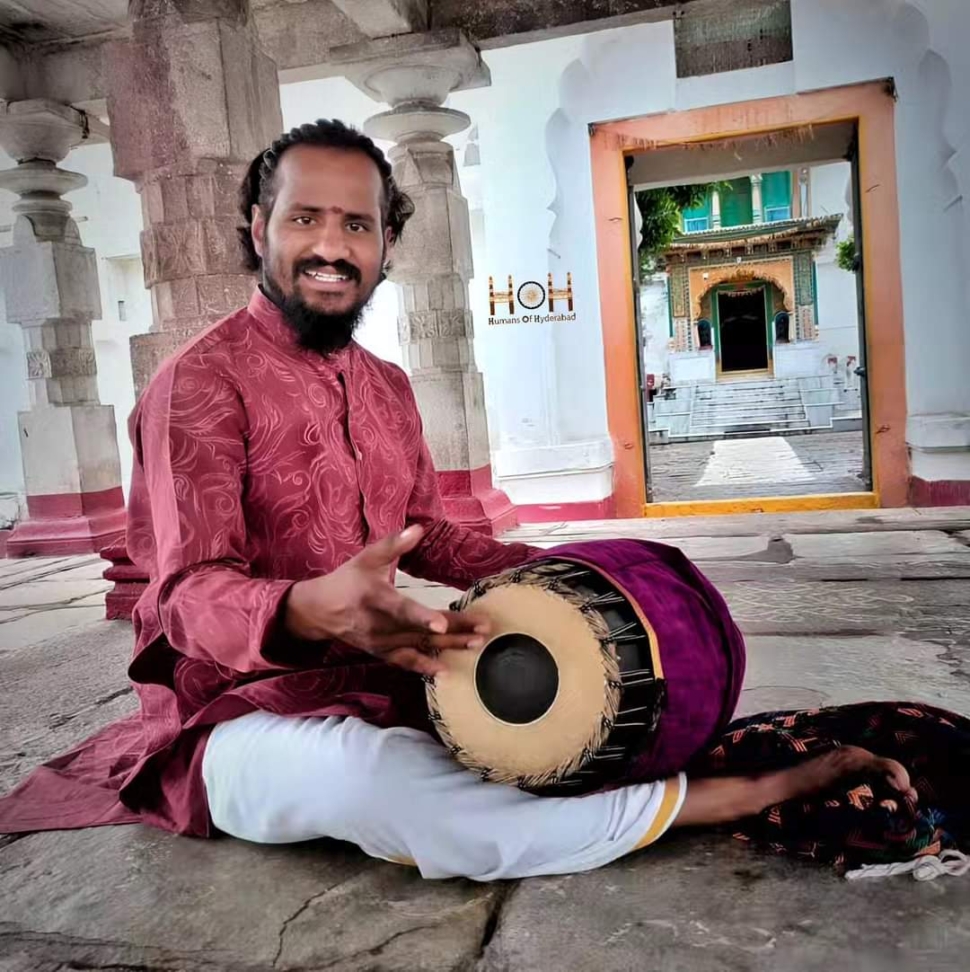“Growing up, there was no direct connection to music in my family. I come from a small town called Dharmasagar in Warangal district. My father is a farmer, and my mother is a homemaker. I am the youngest in the family, with two elder sisters who got married early. Most of my childhood was spent balancing school, college, and the daily routine of a simple village life.
As a child, I often visited temples, sang bhajans, and participated in keertans. Though I enjoyed these moments, I never saw them as anything more than devotional activities. Music hasn’t found its way into my life yet.
In 2012, while pursuing an M.Sc in Mathematics at City Government College in Nayapul, Hyderabad, something unexpected happened. One day, I was enjoying a cup of tea near the college when a board caught my attention – Sri Annamacharya Government College of Music and Dance. Curious, I decided to step inside.
I met Guru Jayakumar Acharya, a mridangam maestro and lecturer at the institute. Initially, I expressed interest in learning Western instruments like the keyboard. But my guru encouraged me to explore the depth and beauty of Mridangam. Back in school, I used to tap beats on benches in sync with songs during class. That connection with rhythm felt familiar, and I immediately agreed to learn mridangam.
At 22, I began my journey with mridangam, even as I continued my mainstream education . Every day, I commuted from Warangal to Hyderabad by passenger train, balancing my mornings at college and afternoons at the music institute. Initially, I didn’t have clarity about my future. But as I progressed in my training, I realized that Mridangam was not just an instrument—it was my calling.
In my second year of M.Sc, I made a bold decision to discontinue my studies and dedicate myself entirely to learning music and Mridangam. With the guidance of my first guru, Jayakumar Acharya, and later Guru Janardhan Garu, along with my parents’ support, I completed the course and later went on to gain the practical exposure by performing at kacheris and programs.

Over the years, I performed Mridangam at kacheris, cultural events, and other prestigious programs. I also got trained in the unique rhythm style of Perini Natyam. Performing for Perini Natyam was one of the most challenging experiences of my career. Synchronizing with the intense, powerful dance movements required not only technical skill but also an emotional understanding of rhythm.
I also had the opportunity to perform alongside esteemed artists like Perini Raj Kumar at events such as Saptha Tandavalu in Ravindra Bharathi, in front of distinguished dignitaries.
Today, I am proficient in various percussion instruments, including tabla, kanjira, chenda, and dhamarukam. Each instrument has taught me the importance of supporting the main artist without overshadowing them. Whether it’s a classical dance recital or a traditional kacheri, my goal is to enhance the overall performance with my rhythm.

I have performed across India-in Kashi, Karnataka, Kerala, Delhi, Chennai, and Goa. Despite language barriers, rhythm is a universal language that connects people. I’ve also contributed to movie recordings and private music projects, adapting my skills to suit diverse requirements.
Teaching has also become an integral part of my journey. I’ve trained students through offline, online, and home-based classes. Some have completed diploma courses from Potti Sriramulu Telugu University, while others are still on their learning path.
However, I feel that Telangana’s rich musical heritage has diminished over time. While efforts are being made to revive it, I believe establishing a dedicated music college in every district of Telangana would make a significant difference. My goal is to continue this journey, nurture new talent, and ensure that the legacy of classical percussion lives on.”
- Kolipaka Veera Swamy, Mridangist and Percussionist
